Golf exercises for flexibility
Enhance your flexibility and improve your swing. Try these effective exercises today!
GOLF FITNESS
Boost Flexibility with These Golf Exercises
Golf is about more than just swinging a golf club; it’s a sport that demands precision, power, and endurance. Among the many key components of a successful game, flexibility stands out as a cornerstone for enhancing your golf performance. By improving your range of motion, flexibility directly impacts your golf swings, shoulder joint mobility, and overall physical fitness. Whether you’re a seasoned pro or an amateur golfer, incorporating mobility exercises and golf stretches into your routine can elevate your game, reduce the risk of injury, and make your body more resilient.
Let’s explore how flexibility and core strength work together to improve your game and ensure better performance on the course.
Understanding the Role of Flexibility in Golf
Why Flexibility Matters in Golf
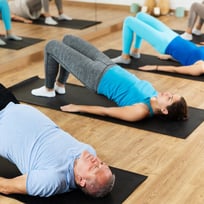


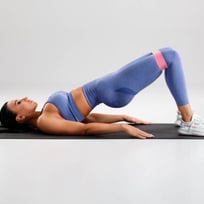


Flexibility is a key determinant of an efficient and accurate golf swing. Without adequate shoulder joint and hip mobility, you may struggle to achieve a full range of motion during your swing, leading to loss of power and inconsistent results. Flexible muscles and joints allow your upper body and lower body to work in harmony, enabling a more powerful and controlled drive.
Flexibility also reduces strain on your major muscles, shoulder blade, and hip joint, which are heavily engaged during a golf swing. For instance, tight muscles in the hips or hamstrings can prevent proper rotation, while limited chest muscle mobility can restrict your follow-through. Golfers who focus on improving flexibility can execute a smoother, more fluid swing and adapt to challenging terrains like bunkers or uneven ground.
Common Flexibility Challenges for Golfers
Many golfers, especially senior golfers, face issues such as tight hamstrings, restricted hip mobility, and limited rotational strength. These challenges not only hinder your swing mechanics but can also lead to compensatory movements that increase the risk of injury, such as lower back strain or shoulder pain.
For example, stiff shoulders may prevent a complete backswing motion, reducing swing speed, while tight hip flexors can affect rotation and body control. Addressing these challenges through targeted mobility exercises is essential for maintaining long-term performance.
Benefits of Mobility Training for Golfers
1. Enhance Rotational Mobility for a Powerful Golf Swing
Rotational mobility is essential for generating power during a swing. Exercises like torso twists, seated rotations, and dynamic stretches for the spine and core help improve rotation, ensuring a smoother, more effective swing.
2. Achieve a Full Range of Motion to Prevent Golf Injuries
A full range of motion not only enhances performance but also protects against common golf-related injuries. Incorporating dynamic stretches like hip hinges and arm circles before a game prepares your body for the repetitive demands of golf.
3. Strengthen Core Stability for Better Control and Power
A strong core is the foundation of stability and power in golf. By targeting the abdominal muscles, obliques, and lower back, exercises like planks, bird dogs, and Russian twists improve body stability, rotational power, and overall swing mechanics.
4. Dynamic Stretches to Loosen Tight Muscles and Joints
Dynamic stretches are particularly effective for loosening tight muscles in the shoulder joint, hips, and chest muscles. Movements like arm swings and twisting stretches prepare your body from head to toe for optimal performance.
5. Boost Golf Performance and Balance with Regular Mobility Training
Regular mobility and core stability training benefit not only your golf game but also your overall physical health. These exercises promote balance, reduce the likelihood of falls, and are particularly beneficial for senior golfers aiming to maintain their agility and performance.
Warm-Up Routine: Preparing Your Body for the Course
A proper warm-up routine is essential for reducing the risk of injury and optimizing your performance on the course.
Step 1: Start with Light Activity
Begin with 5–10 minutes of light activity to increase blood flow and prepare your body stronger for the physical demands of golf. A brisk walk or balance exercises like bodyweight squats can activate your muscles and improve circulation.
Step 2: Focus on Dynamic Stretches
Dynamic stretches like hip flexor lunges, torso twists, and seated rotations target the critical areas engaged during a golf swing. Hold each stretch for 30 seconds to maximize flexibility and avoid stiffness.
Step 3: Post-Round Stretches for Recovery
After your game, practice post-round stretches like hamstring stretches or spinal twists to reduce muscle tightness and support recovery. This ensures you’re ready for your next game without stiffness or discomfort. Post-round stretches, such as hamstring stretches or seated spinal twists, maintain flexibility and prevent stiffness, allowing you to recover faster for your next game.
Dynamic Stretches for Improved Swing Mechanics
"Why Dynamic Stretching is a Game-Changer for Golfers"


Enhance Flexibility and Range of Motion with Dynamic Stretching
Dynamic stretching is an essential component of any golfer’s routine. It actively prepares the body for the physical demands of the game by improving flexibility and increasing the range of motion. These benefits are vital for executing proper swing mechanics, allowing golfers to achieve a more fluid and powerful swing while reducing stiffness and strain.
Pre-Round Stretching for Better Shoulder Turns and Swing Efficiency
Incorporating a dynamic stretching routine before heading to the course can significantly enhance your performance. Focused stretches improve shoulder turns, leading to a more effective and controlled golf swing. This preparation reduces the risk of muscle strain and ensures your body is ready for the repetitive motions of a round of golf. Dynamic movements, such as arm circles and torso twists, warm up the muscles and joints involved in your swing.
Seated Rotations: A Dynamic Stretch for Rotational Mobility
Seated rotations are highly recommended for golfers as they promote rotational mobility, a key component of effective swing mechanics. This exercise involves sitting on a chair or bench with your feet flat on the ground and then gently twisting your torso from side to side. By improving rotational flexibility, seated rotations help golfers generate more power and consistency in their swings.
Shoulder Stretch: A Core Stretch for Golfers
The shoulder stretch is a cornerstone of dynamic warm-ups for golfers. By opening up the shoulder joints and increasing their range of motion, this stretch helps golfers achieve a full backswing and smooth follow-through. It also minimizes the risk of shoulder strain, a common issue for golfers due to repetitive motion.
Twisting Stretches: A Key to Better Overall Performance
Dynamic stretches like twisting stretches play a crucial role in a golfer’s preparation. These movements improve rotational flexibility in the spine and core, ensuring your body remains limber and ready for the physical demands of golf. Regular practice of these stretches not only enhances performance but also helps maintain long-term joint health.
Critical Muscle Groups: Focusing on Hips and Lower Back
"Unlock the Full Potential of Your Swing by Focusing on Key Muscle Groups"
The Importance of Hips, Glutes, and Lower Back in Golf
The hips, glutes, and lower back play a pivotal role in executing a powerful and effective golf swing. These muscle groups work together to generate rotation, stabilize your posture, and maintain balance during your swing. Focusing on flexibility and strength training for these areas ensures improved swing mechanics and a reduced risk of injury. Engaging the glutes and hip flexors can help reduce back pain while improving overall hip mobility, which is necessary for an effective swing. Exercises like hip bridges, lunges, and lower-back stretches should be integral to any golfer’s fitness routine.
Core Strength: The Foundation of Power and Stability
A strong core is essential for transferring power efficiently throughout the golf swing. It stabilizes the body and protects the lower back from strain caused by repetitive rotational movements. Planks, bird dogs, and Russian twists are excellent exercises for developing core strength and ensuring your body remains stable during your swing. This stability also helps maintain accuracy and consistency across rounds.
Tight Hamstrings: A Common Culprit for Lower Back Pain
Tight hamstrings can increase pressure on the lower back, leading to discomfort and restricted movement. Incorporating stretches targeting the hips and hamstrings, such as seated forward bends or standing hamstring stretches, alleviates tension in these muscles. Improved flexibility in these areas reduces strain on the lower back and enhances the golfer’s ability to achieve a full range of motion.
Core Stability: The Key to Preventing Lower Back Pain
Core stability differs from core strength, emphasizing the ability to resist force rather than produce it. This resistance is critical for preventing lower back pain, especially during the high-impact rotational movements involved in a golf swing. Anti-rotational exercises, like all presses and side planks, build resilience in the core, safeguarding the lower back and improving overall swing efficiency.
Engaging Glutes and Hip Flexors for Improved Mobility
The glutes and hip flexors are instrumental in maintaining proper posture and generating power during a swing. Tight or weak muscles in these areas can limit hip mobility, leading to compensations that strain other parts of the body. Specific stretches like pigeon pose and hip flexor lunges help loosen these muscles, reducing back pain and promoting a smoother, more effective swing. These stretches also enhance overall hip rotation, which is vital for creating power and accuracy in your game.
Shoulder Flexibility: Key to a Powerful Drive
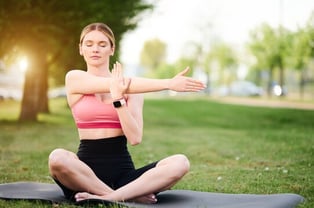







Shoulder Stretches: A Must for Golfers
Shoulder stretches are essential for enhancing the mobility of the shoulder joint, a critical area for upper-body movements in golf. By opening up the shoulder joint, golfers can improve their swing mechanics and achieve better control during each shot. Exercises like wall angels and cross-body shoulder stretches are particularly beneficial for loosening tight muscles and increasing joint flexibility.
Boost Performance and Prevent Injuries with a Proper Warm-Up
Incorporating shoulder stretches into your warm-up routine is vital for preparing your body for the physical demands of golf. Regularly practicing these stretches improves shoulder mobility, enhances performance on the course, and helps prevent injuries such as rotator cuff strains or shoulder impingements. Pre-round shoulder warm-ups ensure your muscles and joints are primed for optimal performance.
Shoulder flexibility is key to generating power and accuracy in golf swings. A flexible shoulder joint allows for a full and controlled range of motion, resulting in more efficient mechanics and increased swing speed. This improved movement translates directly into more powerful and precise drives, giving golfers a competitive edge on the course
Combat Sedentary Habits with Shoulder Mobility Exercises
Many golfers spend significant time seated during the day, which can lead to tight shoulders and reduced mobility. Exercises targeting shoulder mobility, such as arm circles and band pull-aparts, counteract the effects of sedentary activities by promoting better posture and overall shoulder function. These exercises improve golf performance and enhance daily movement and comfort.
Core Strengthening: Enhancing Balance and Control
Strengthening the Core: A Key Component for a Powerful and Accurate Golf Swing
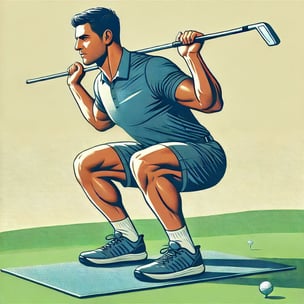







Strengthening your core muscles is critical to improving control over body movement, leading to better golf swings with increased swing power and accuracy. By targeting the abdominal muscles, obliques, and lower back through focused core exercises, golfers can build the core strength required for greater stability and balance, essential for consistent and controlled swings.
A strong core serves as the central force connecting the lower body to the upper body, enabling the efficient transfer of power. This synergy enhances the effectiveness of the golf swing, improving both performance and energy efficiency. Regularly practicing core-strengthening exercises not only elevates your golf game but also helps prevent common golf-related injuries. A well-trained core provides a stable center of gravity, reducing the risk of injury by supporting the hip joint, shoulder blade, and spine during compound body movements like a complete golf swing.
Incorporating mobility exercises and dynamic stretches into your training program is equally important. These activities improve flexibility for golf, enabling a full range of motion during the swing. For instance, exercises targeting the hip flexors, chest muscles, and glute muscles can greatly enhance your ability to perform an efficient backswing motion without losing power or control.
For senior golfers or those seeking to maintain long-term physical fitness, gentle yet effective routines like bodyweight squats and stretches that emphasize the lunge position can help keep the body strong and injury-free. Whether you’re an amateur golfer or a seasoned pro, a well-rounded workout routine focused on core strength, hip mobility, and balance training is essential for reaching your full potential on the course.
With consistent practice of golf exercises that improve core power and rotational strength, you can take your golf game to the next level, ensuring accurate shots, enhanced swing speed, and long-lasting performance.
Conclusion: Unlock Your Full Potential with Flexibility and Strength Training
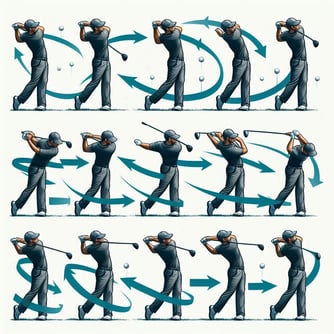
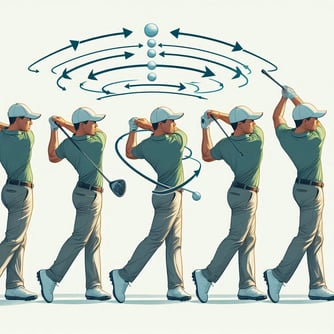
Flexibility and core strength are the backbone of an efficient, powerful golf game. By incorporating targeted mobility exercises, dynamic stretches, and core workouts into your routine, you can achieve better swing mechanics, reduce the risk of injury, and enhance your overall physical fitness.
Whether you’re an amateur golfer or a seasoned pro, a consistent training program focused on flexibility and strength will transform your game and ensure long-term success on the course.
FAQs
Is yoga beneficial for golfers to improve flexibility?
Absolutely! Yoga incorporates stretching and balance training exercises that enhance core strength, hip mobility, and overall body control. Poses like the pigeon pose, downward dog, and twisted lunge are particularly effective for golfers.
How does balance training improve golf performance?
Balance training exercises improve body control and stability, which are essential for maintaining proper posture during your swing. Movements like bodyweight squats, single-leg stands, and balance board drills strengthen your core and lower body, reducing the risk of injury while boosting performance.
Can overspeed training benefit my golf swing?
Yes, overspeed training is a technique designed to improve swing speed by conditioning your body to move faster than normal. Combined with core strength and flexibility exercises, it can significantly enhance your performance on the course.
How does posture affect flexibility in golf?
Poor posture can lead to tight muscles and reduced hip mobility, affecting your ability to execute a complete and efficient golf swing. Maintaining proper posture during stretches and workouts ensures maximum flexibility and overall physical fitness benefits.
How can I strengthen my glutes for better golf performance?
Strong glutes are essential for stabilizing the hip joint and generating power during a swing. Exercises like squats, lunges, and hip bridges target these muscles, improving rotation and reducing strain on the lower back.
What’s the difference between static and dynamic stretches for golfers?
Static stretches involve holding a position for 20–30 seconds to improve flexibility, while dynamic stretches involve movement to activate muscles and prepare for action. Dynamic stretches, like arm swings and leg swings, are ideal before golf, while static stretches are better post-game.
How do flexibility exercises benefit golfers in their daily lives?
Improved flexibility enhances day-to-day mobility and reduces the risk of injury in routine activities. Stretching also relieves tension in tight muscles, improving posture and comfort during sedentary tasks or other physical activities.
Is it ever too late to start flexibility training for golf?
It’s never too late! Flexibility training benefits golfers of all ages, including senior golfers. Starting with gentle stretches and progressing to more advanced exercises over time can improve your game and keep your body healthy for years.
